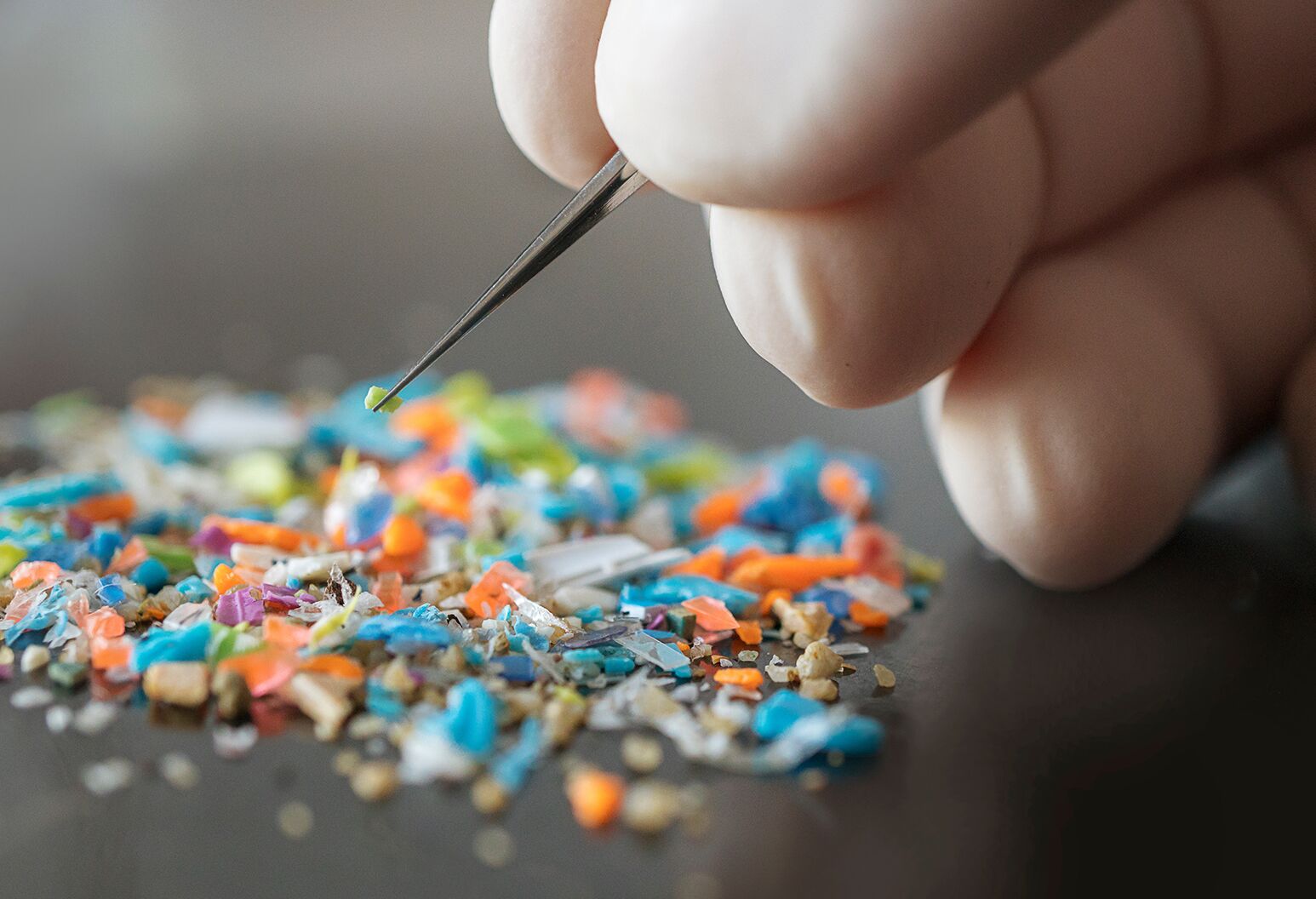healthy living/fitness
Guilt-Free Chocolate And Chia Seed Pudding

New research about microplastics suggests they might be reaching parts of the brain. How worried should you be?
4 min read
Microplastics—those tiny plastic particles we’re constantly hearing about—are all around us, and now, a recent study published in JAMA Network Open has uncovered that microplastics have been found in the olfactory bulb of the human brain, a part that helps us smell. This discovery raises some major questions about how these particles got there in the first place, and what potential risks they pose to our health.
While the idea of having plastic in your brain might sound alarming, we shouldn’t jump to conclusions just yet. "Although my intuition would say that it’s not good, we don’t yet have the data from long-term studies to say for sure what the effects might be, and what happens when it interacts with our brain cells," says Wells Brambl, MD, a board-certified emergency medicine physician specializing in toxicology at Northwell Health.
But what’s clear is that microplastics are all around us—whether in the air we breathe or the food we eat. So, what does this mean for our brain health?
Researchers analyzed the olfactory bulbs from 15 people who had passed away and found microplastics in eight of them. The most common type? Polypropylene, a material found in everyday products like food packaging, kitchen utensils, bottle caps, and even synthetic clothing.
By providing your email address, you agree to receive email communication from The Well.
According to Brambl, this isn't surprising. "Microplastics have already been discovered in other parts of the human body, like the lungs, liver, and bloodstream, so it makes sense that we’re now seeing them in the brain as well,” he says.
What’s particularly intriguing about this study is that it suggests microplastics may be entering the brain through the olfactory bulb, which doesn’t have a protective barrier like other parts of the brain do. In other words, the particles we breathe in might have a more direct path to our brain tissue.
"Because there’s no blood-brain barrier in that area, it creates a sort of open door for these particles,” Brambl explains.
One of the big questions this study raises is whether microplastics could increase a person’s risk of neurological conditions, like dementia or other cognitive issues. The olfactory bulb is located near the frontal lobe, an area of the brain responsible for high-level functions like decision-making and problem-solving. According to Brambl, it’s too early to say if there’s any direct connection, but the possibility is worth exploring.
"Right above the olfactory nerve are the frontal and prefrontal lobes, which are thought to be the seat of consciousness," Brambl notes. "There’s a form of dementia linked to damage in this area, so it’s natural to wonder if microplastics might play a role. But at this point, we don’t have the evidence to establish causality."
The next step, according to the study, would be to conduct long-term research that tracks people’s exposure to microplastics over time to see if those with higher levels of exposure show greater risks for neurological issues.
Even though we don’t have all the answers yet, there are a few steps you can take to reduce your exposure to microplastics in daily life, including:
While this study brings attention to the presence of microplastics in the brain, it’s important to remember that we’re just scratching the surface of understanding what this means for our health. In the meantime, staying mindful of the ways microplastics make their way into our lives—and taking small steps to reduce exposure—can help protect our health as research continues.
The Well is Northwell Health’s commitment to the future of health care. In this time of information overabundance, much of which is inaccurate, unhelpful, or even difficult to understand, Northwell Health is on a mission to make a difference as an honest, trusted, and caring partner. The site connects with consumers to provide them with personalized content that reduces their stress, makes them laugh, and ultimately feel more confident and capable on their healthcare journey.